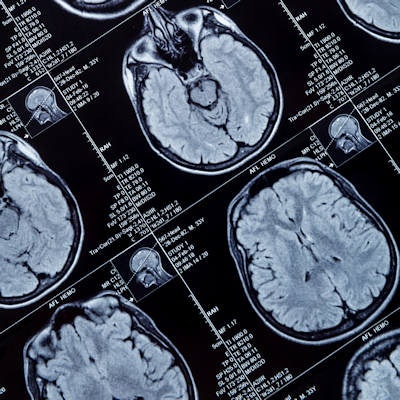
MRI shows eight particular neurologic findings in patients with severe COVID-19, according to a study published June 16 in Radiology.
The study results could help clinicians better recognize the effects of the disease, wrote a team led by Dr. Stéphane Kremer of Hôpital de Hautepierre in Strasbourg, France.
The study included 37 patients evaluated between March 23 and April 27 at 16 hospitals who had the following clinical findings: positive nasal or lower respiratory tract reverse transcription polymerase chain reaction (RT-PCR) assays, severe COVID-19 infection that required hospitalization and oxygen, neurologic manifestations, and abnormal brain MRI scans.
The group outlined eight neurologic patterns in patients with severe COVID-19 and abnormal MR images:
- Signal abnormalities in the medial temporal lobe (43%)
- Nonconfluent multifocal white matter hyperintense lesions on fluid-attenuated inversion recovery (FLAIR) and diffusion MRI sequences, with variable enhancement and associated hemorrhagic lesions (30%)
- Extensive white-matter microhemorrhages (24%)
- Extensive and confluent supratentorial white-matter FLAIR hyperintensities (11%)
- FLAIR and diffusion ovoid hyperintense lesions located in the central splenium of the corpus callosum (5%)
- Nonconfluent multifocal white matter hyperintense lesions on FLAIR/diffusion, with variable enhancement (5%)
- Acute necrotizing encephalopathy (5%)
- FLAIR or diffusion hyperintense lesions involving both middle cerebellar peduncles (5%)
The study results underscore the importance of following patients with these neurological findings on MRI, according to the authors.
"Imaging and neurological follow up has to be undertaken in order to evaluate the prognosis of these patients," they concluded.



















